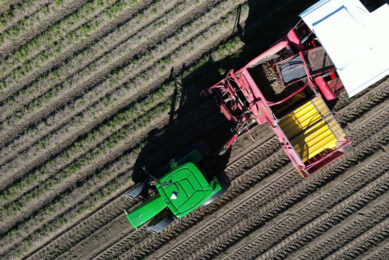CropX develops fertiliser and salt monitoring technology

CropX created a solution to precisely detect fertilisation events, salt concentrations and fertiliser movements throughout the soil. Growers will be able to know the exact concentration of pore water salinity in the soil, detect if excess fertiliser has accumulated in the soil and distinguish fertilisation concentrations at several soil depths.
Both over and under application of fertilisers can decrease crop yields and crop profitability, while fertilisers that leach below the root system do not support crop health and may even cause nitrate pollution by reaching groundwater, says CropX.
Limited capabilities of soil sensors
According to the company to date, soil sensors have not been able to fully support fertilisation management initiatives as they have been limited to measuring the bulk soil electrical conductivity (EC) rather than the electrical conductivity of the soil solution (known as pore EC).
“Relying on faulty conversions to assess pore EC and hampered by everchanging soil dynamics, soil sensors could not provide the real-time insights on fertiliser or salt levels needed to drive efficient fertilisation management efforts,” says CropX.
Monitor fertiliser movements and salt levels
CropX says it now has the capability to precisely monitor fertiliser movements and salt levels in the soil, at multiple depths, simultaneously. The new technology uses machine learning algorithms that learn the unique hyper-local electrical conductivity trends for each specific sensor location.
CropX says that with their, growers will be able to know the exact concentration of pore water salinity in the soil, detect if excess fertiliser has accumulated in the soil and distinguish fertilszation concentrations at several soil depths.
These new in-soil data insights are to empower growers to:
- Make adjustments to their fertiliser management plans during the crop season based on data
- Better target the amount of fertiliser used based on actual crop needs;
- Save on expenses from extensive soil sampling for laboratory salinity measurements;
- Monitor and document fertiliser movements in their soil over time; and
- Minimize fertiliser loss through leaching
Laboratory and field validations
CropX says it plans an “ambitious program” to further advance this recent development, including further laboratory and field validations, limited commercial deployments and potential collaboration with partner organisations.
Join 17,000+ subscribers
Subscribe to our newsletter to stay updated about all the need-to-know content in the agricultural sector, two times a week.



